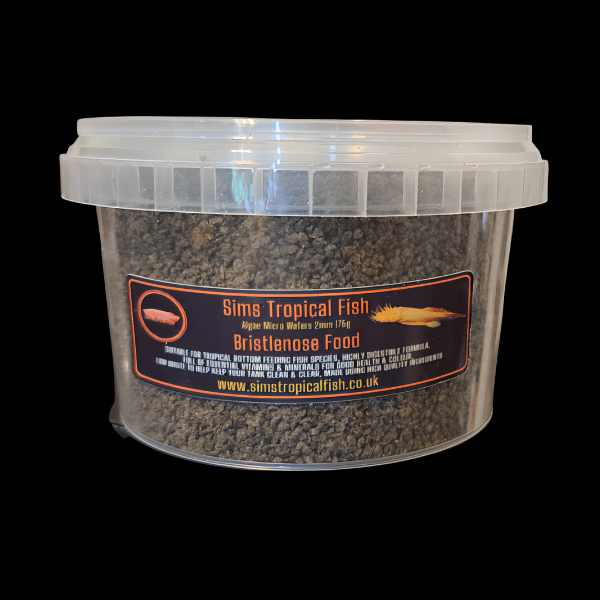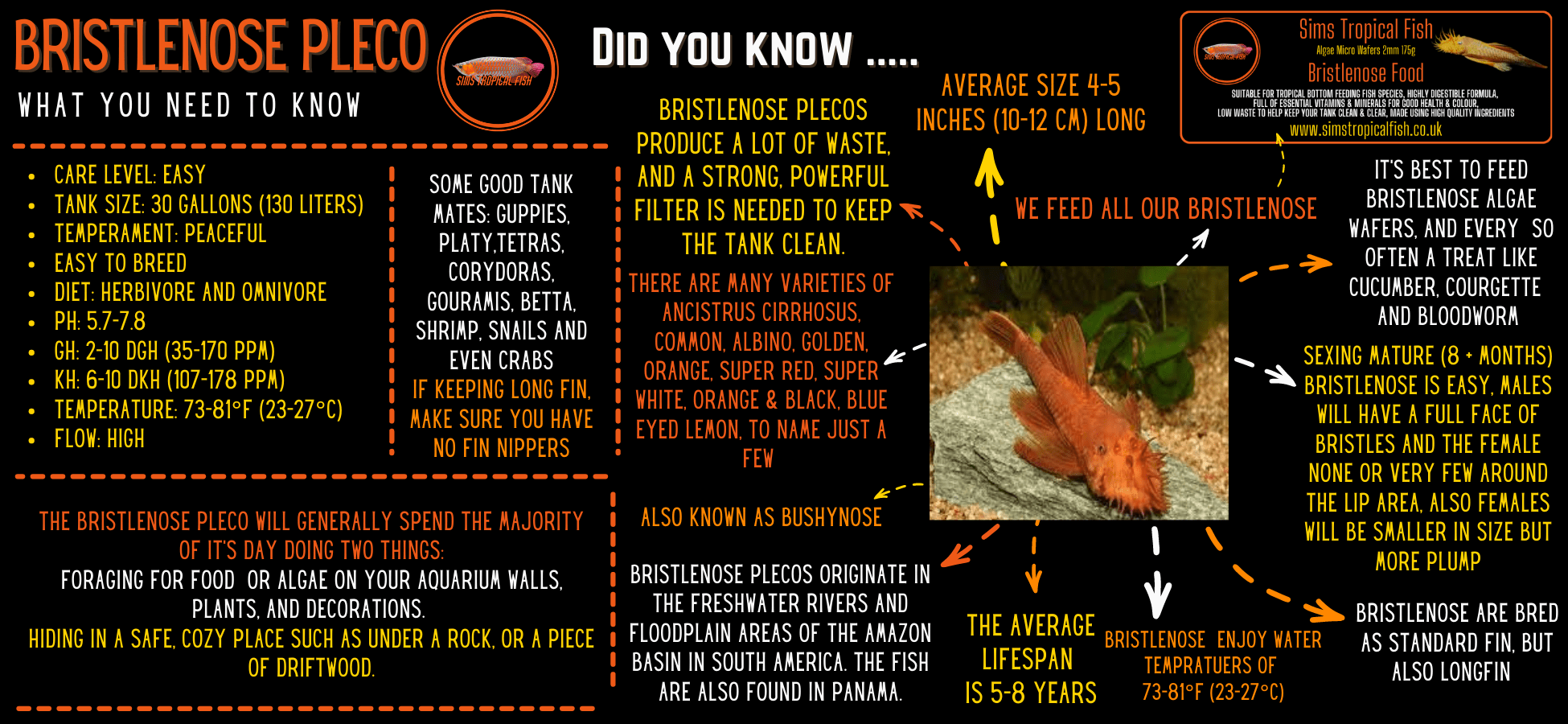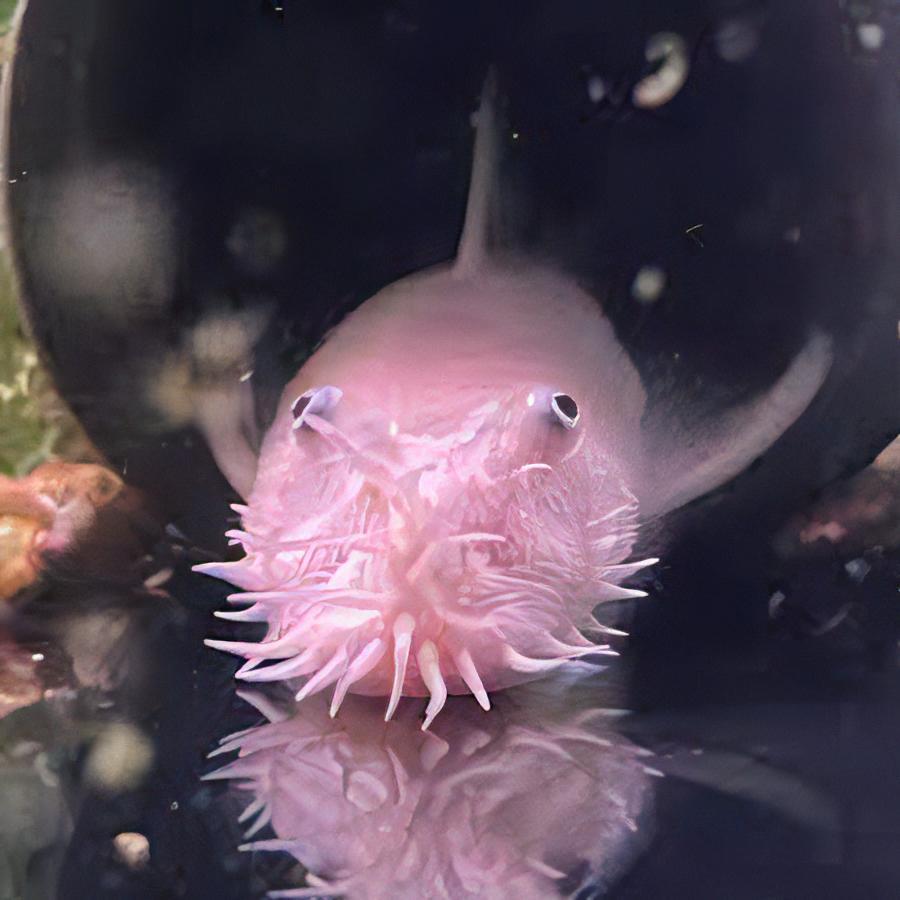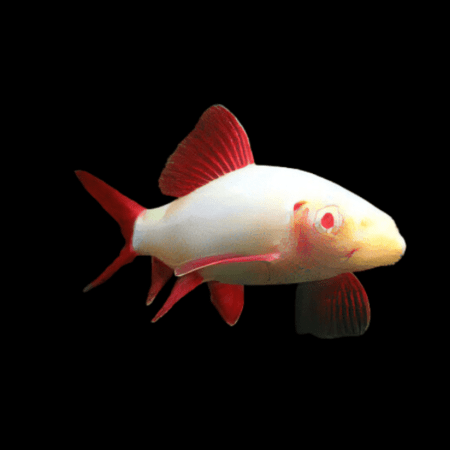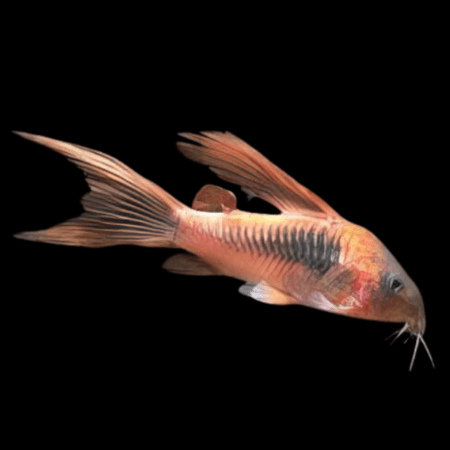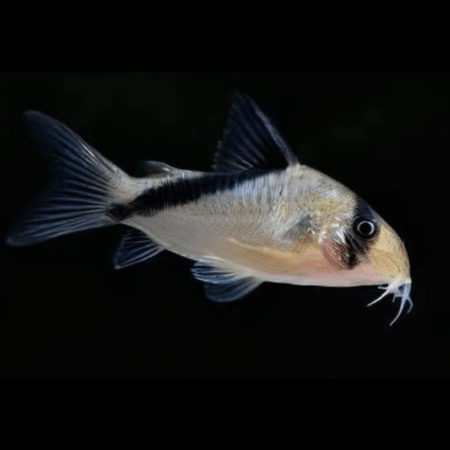Description
Super White Bristlenose Pleco Ancistrus
Overview
Synonyms: N/A
Distribution: South American rivers. Many specimens offered for sale in the trade are tank-bred.
Maximum Size: 12cm (4.72″)
Temperature: 23-27°C
Water Parameters: Will acclimatise to a wide range of conditions. pH: 5.5-8.0, dH: up to 20 degrees.
Compatibility: Community
Lighting: No special requirements
Sexual Dimorphism: Older males develop bushy-like growths on the head.
Feeding: Algae wafers, catfish pellets, granules, flake and frozen foods
Description
Care
Many similar species of Ancistrus enter the trade and are sold as Bristlenose Catfish. The most commonly seen are usually captive-bred and near impossible to correctly identify without the originality location. Ancistrus sp. are great algae eaters, and growing to a maximum 12cm in length, offer a welcome alternative to the common Pleco which attains a monstrous size and is unsuitable for all but the largest of aquariums. Bristlenose catfish prefer a strong water current with plenty of oxygenation. Numerous hiding places should be provided, and should include a good amount of bogwood in order for the fish to graze and extract lignin from it an essential part of their diet. Plants may be safely kept with Bristlenose Catfish, and most small-medium community type fish kept harmoniously alongside them. If keeping more than one specimen (or if keeping with other Loricarids), the occasional minor scuffle for territory may occur, but no serious damage will arise if the fish are given enough space. Bristlenose Catfish must only be added to mature aquariums. Albino, mottled, orange, snow white and long-finned varieties are available. Some of these blue/dark-eyed pale forms are sometimes referred to as L144 but it seems that the few fishes identified under that code have now been extensively crossed into the domestic lines of Ancistrus cf. cirrhosus.
Feeding
Ancistrus sp. are primarily vegetarian, and although algae is an important part of their food supply, this MUST be supplemented with other foods. Algae wafers and tablets are ideal, with the occasional addition of some vegetable matter such as cucumber, lettuce, or peeled steamed peas. Other, meatier sinking and frozen foods will be taken, but it is important to ensure that these fish receive a diet that is mainly vegetable based. As mentioned above, do make certain to include some bogwood in the aquarium.
Breeding
Bristlenose Catfish can be bred in the community aquarium, although high numbers of fry are unlikely to survive under such circumstances. In order to ensure a good surviving brood size, set up a separate softwater spawning aquarium for your breeding pair of Bristlenoses, and furnish will some small cave-like structures (bogwood, rock and slate piles, clean new flowerpots etc). Lighting should not be too bright, and filter intakes protected with sponges in order to safeguard the fry. Bristlenose are secretive cave spawners and up to 120 amber coloured eggs will be laid/fertilised in one of the small caves or crevices provided. The male tirelessly guards the eggs and keeps a good amount of oxygen flowing over them by continually fanning with his pectoral fins. After approximately 5 days, the eggs will hatch into wrigglers and they will attach themselves to the decor and tank walls. The yolk sacs are absorbed over a 10-14 day period, after which time they will become free-swimming. Given the right conditions, it is not unknown for compatible pairs to spawn every 6 weeks.

